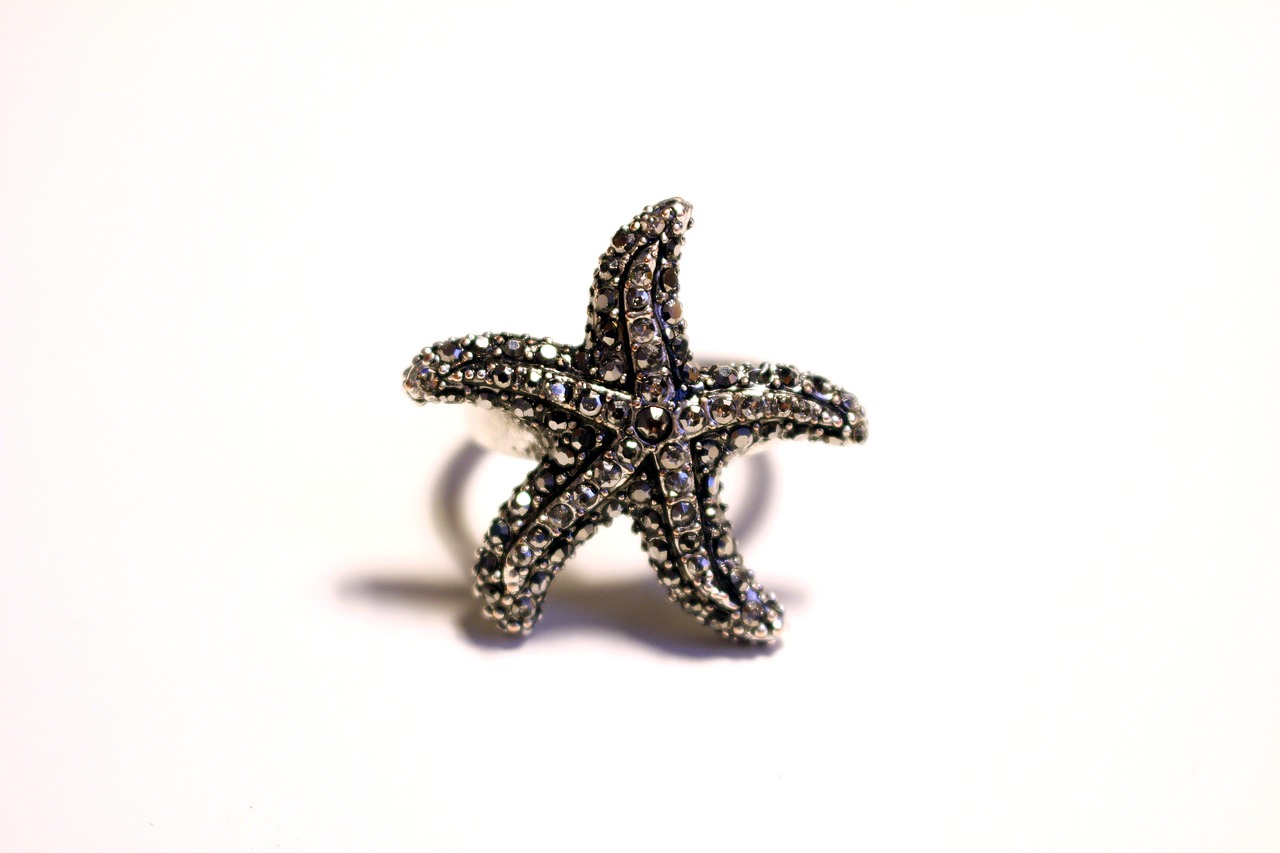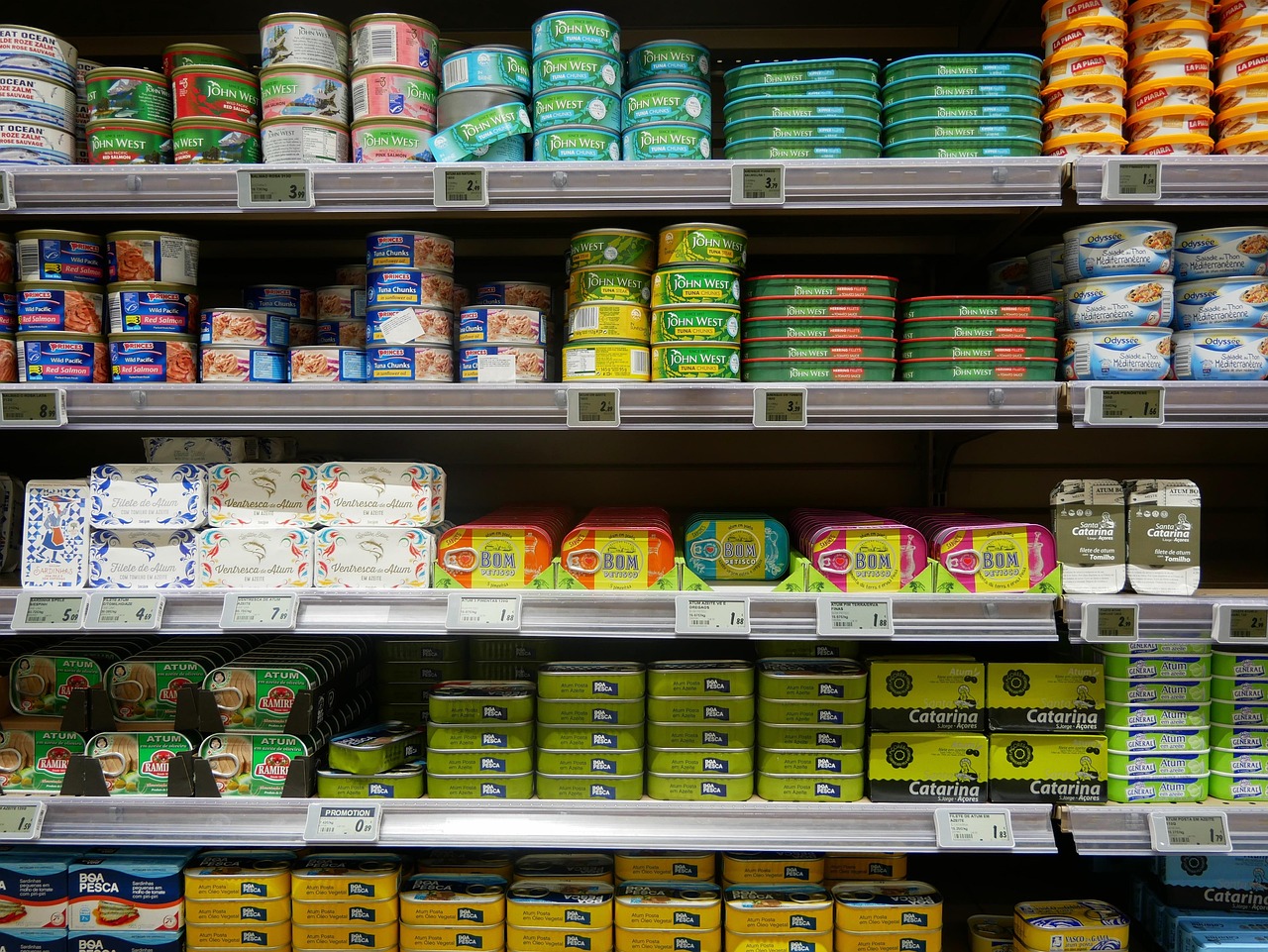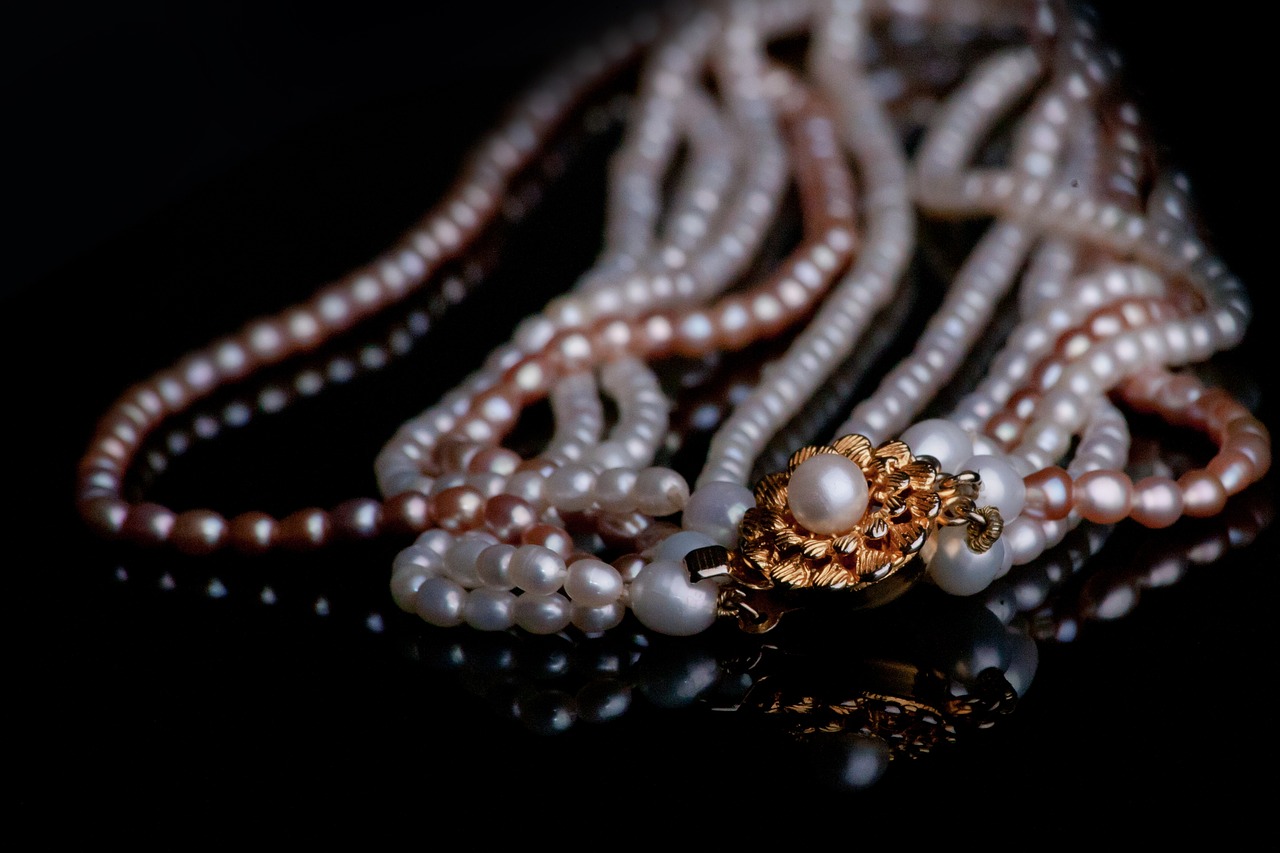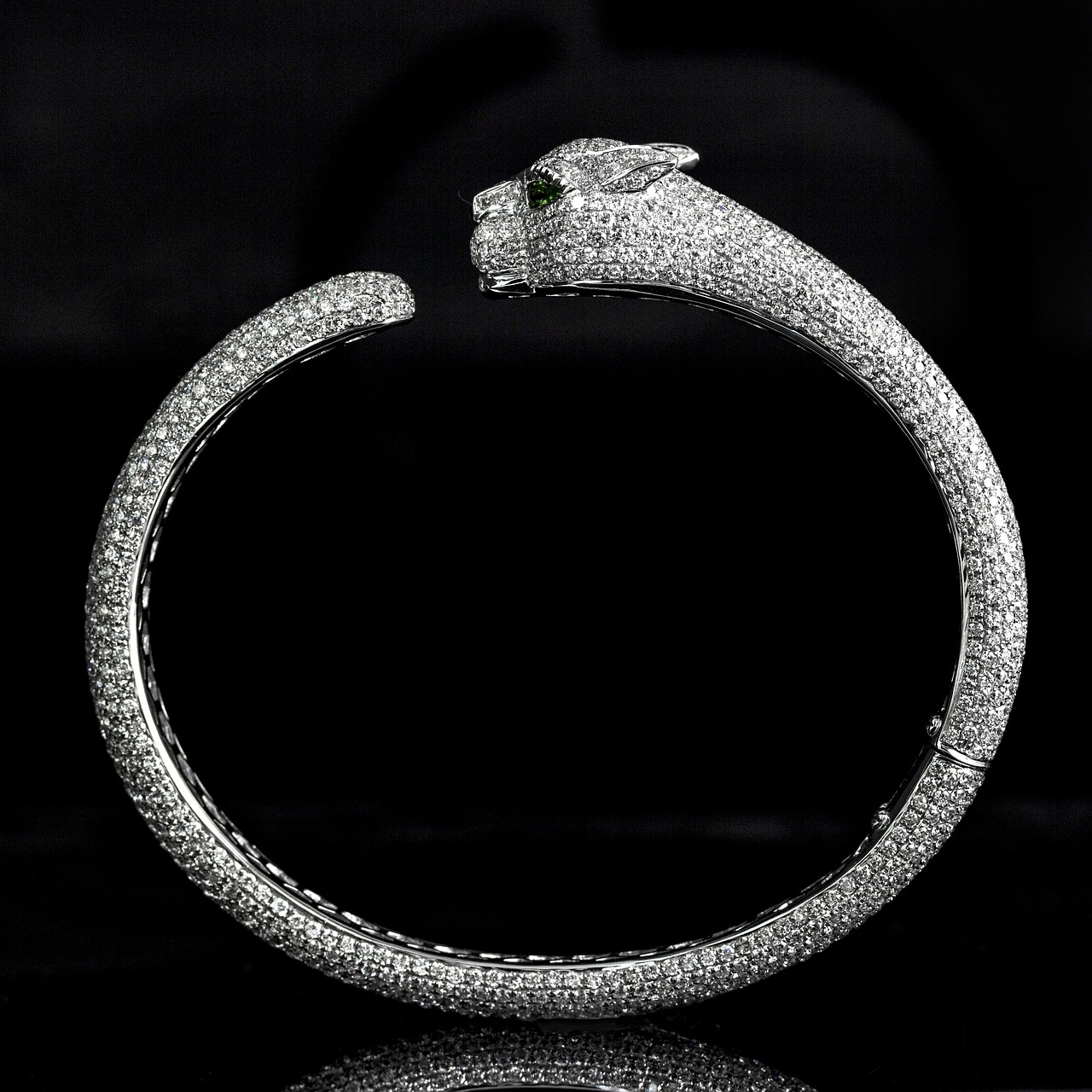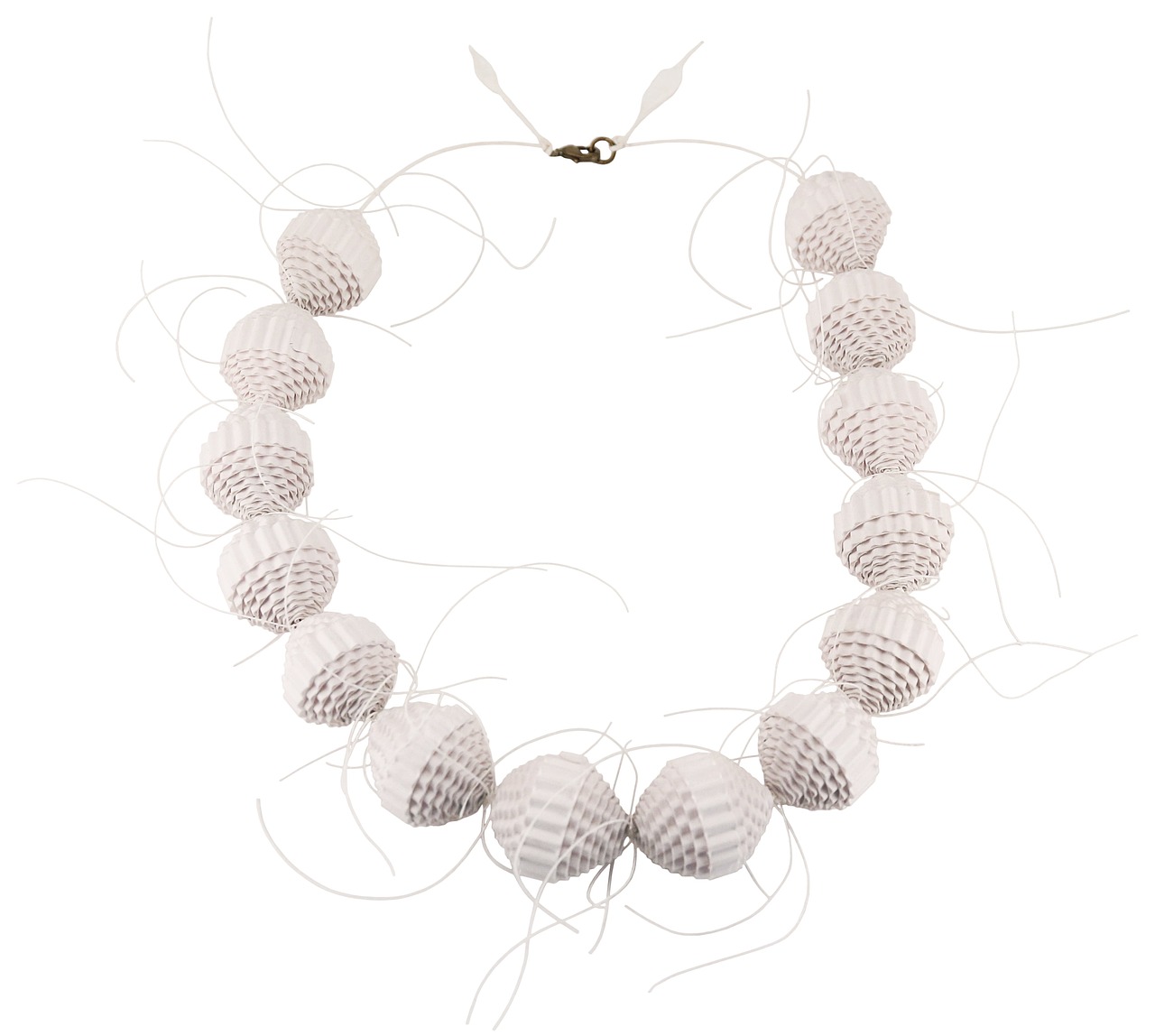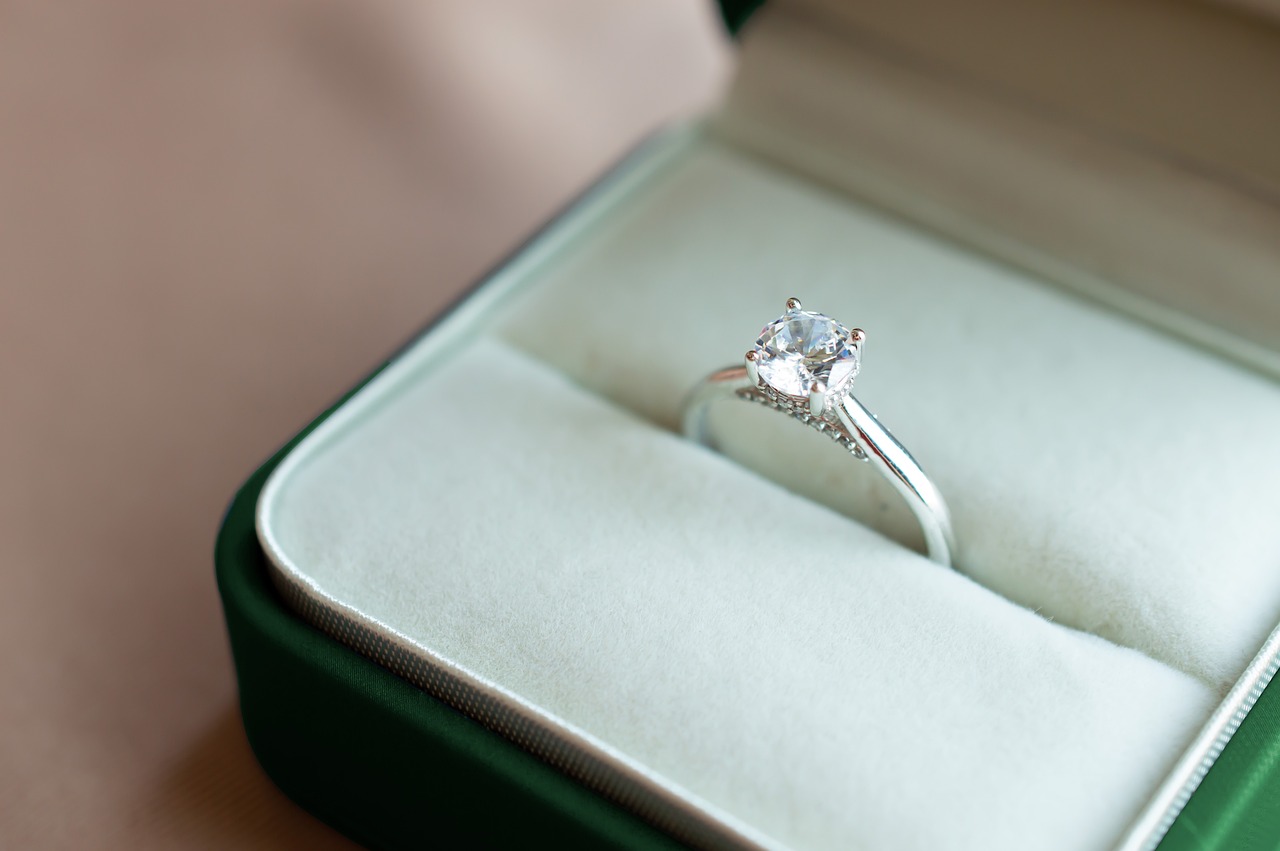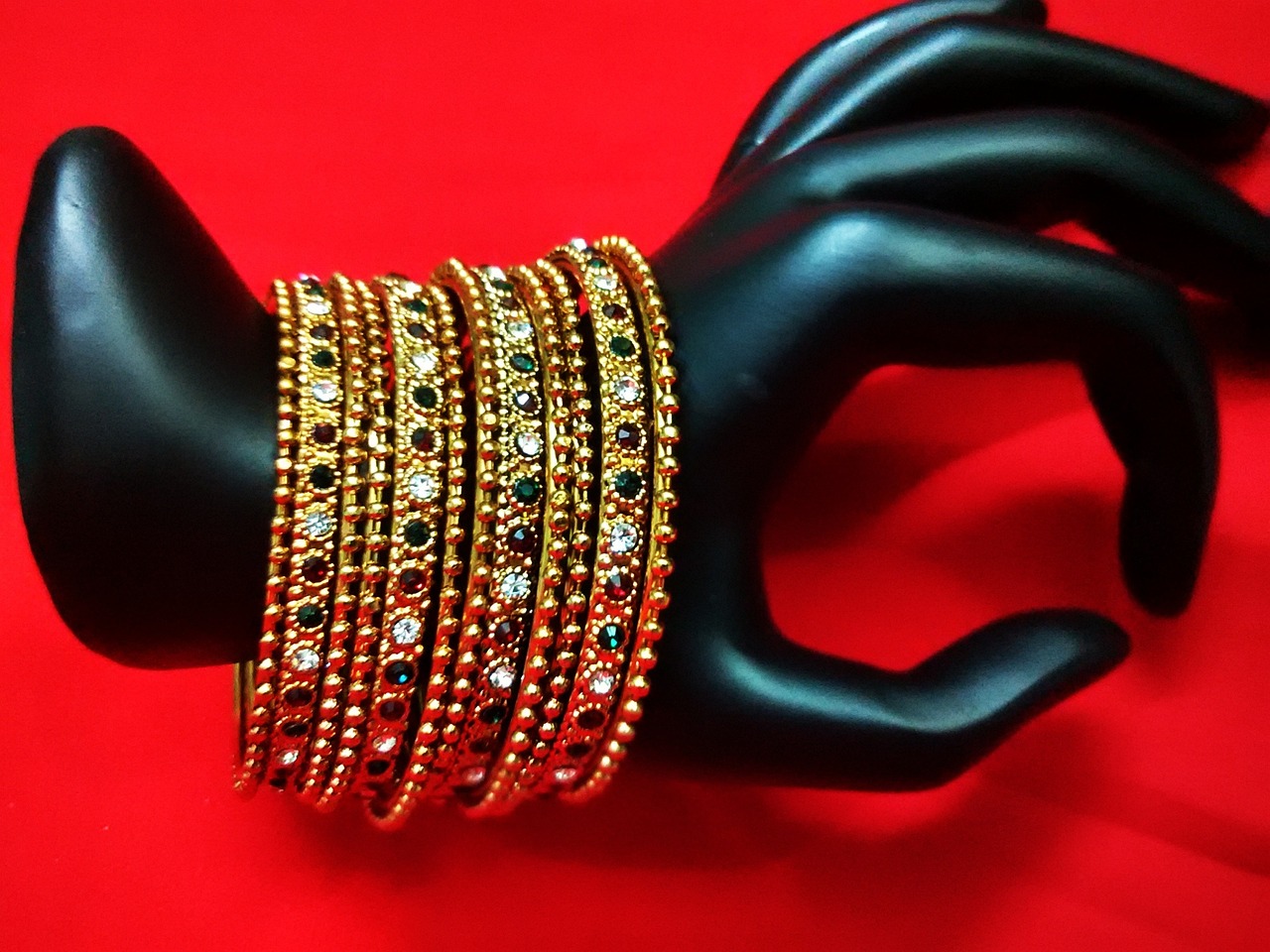This article delves into the symbolism inherent in jewelry, shedding light on the cultural, personal, and emotional dimensions that inform our choices. Jewelry is not merely an accessory; it serves as a powerful medium of self-expression and a reflection of our values and beliefs. Each piece carries a story, whether it be a family heirloom or a modern design, and understanding these stories can deepen our appreciation for these adornments.
Across the globe, jewelry holds significant cultural meanings. For instance, in many cultures, wedding rings symbolize eternal love and commitment. In contrast, talismans and amulets are often worn for protection or to bring good luck. These pieces reflect the values and beliefs of the societies from which they originate, showcasing how jewelry acts as a cultural narrative.
Personal style is a major factor in jewelry selection. Individuals often gravitate towards pieces that resonate with their unique identity, showcasing their tastes and lifestyle. Whether opting for minimalist designs or bold statement pieces, our choices reveal much about who we are and how we wish to be perceived.
Jewelry is rich with symbolism. Common motifs such as hearts, infinity signs, and crosses convey profound meanings. For example, the heart symbolizes love and affection, while the infinity symbol represents eternal connections. These symbols are not just decorative; they serve as powerful messages about our values and relationships.
The heart symbol is universally recognized as a representation of love and affection. Frequently used in romantic jewelry, such as pendants and rings, it signifies deep emotional connections. This symbol transcends cultures, making it a popular choice for expressing sentiments of love and care.
Infinity symbols convey the notion of eternal love and limitless possibilities. Often chosen for meaningful gifts, they symbolize an unbreakable bond between partners or friends. This symbolism resonates deeply with those who value lasting relationships and connections.
Birthstones are believed to hold specific meanings and powers, often associated with personality traits and life events. Many individuals select jewelry featuring their birthstone for its personal significance, making it a meaningful addition to their collection. Each stone carries its unique story, enhancing its value to the wearer.
Religious jewelry serves as a reminder of faith and beliefs. Items like crosses, pendants, or prayer beads provide spiritual comfort and signify one’s devotion. Wearing such pieces can be a personal and public expression of one’s faith, creating a sense of community among believers.
Engagement rings are rich in symbolism, representing commitment and love. The choice of metal and stone can reflect personal values, such as sustainability or family heritage. The design often tells a story, making each ring unique and meaningful to the couple.
Friendship bracelets symbolize loyalty and connection between friends. Often handmade or exchanged, these pieces serve as tangible reminders of shared experiences and emotional bonds. They embody the essence of friendship, making them cherished tokens of affection.
Jewelry allows individuals to express their personality and creativity. Unique designs or custom pieces can showcase personal stories, making jewelry a powerful medium for self-expression. Whether through color, style, or symbolism, jewelry can articulate who we are without words.
Emerging trends in symbolic jewelry include the use of sustainable materials and personalized designs. These trends reflect a growing awareness of ethical consumption and the desire for meaningful, individualized adornments. As consumers become more conscious of their choices, the jewelry industry is evolving to meet these demands.

What Does Jewelry Symbolize in Different Cultures?
Jewelry is not merely an accessory; it is a profound expression of culture, identity, and beliefs. Across various societies, jewelry serves as a symbolic representation of significant life events, social status, and personal sentiments. This article delves into the rich tapestry of meanings that jewelry holds in different cultures, highlighting how each piece tells a unique story.
Throughout history, jewelry has been imbued with deep meanings. For instance, in many cultures, wedding rings symbolize the eternal bond of marriage. The circular shape of the ring represents infinity, signifying love that knows no end. In contrast, talismans are often worn for protection, believed to ward off evil spirits or bring good fortune. These pieces are not just adornments; they are powerful symbols of hope and belief.
In ancient Egypt, jewelry was a reflection of status and wealth. Pharaohs adorned themselves with intricate gold pieces, which were believed to possess magical properties. Similarly, in Indian culture, gold jewelry is a vital part of weddings, symbolizing prosperity and good fortune. The use of specific gemstones in jewelry also carries cultural significance; for example, rubies are associated with love and passion in many cultures, while sapphires symbolize wisdom and royalty.
Personal beliefs and values significantly influence jewelry choices. Many individuals select pieces that resonate with their spiritual beliefs or personal stories. For instance, religious symbols such as crosses, stars, or crescent moons are often worn as a testament to one’s faith. These items serve as constant reminders of one’s beliefs and can provide comfort in times of need.
- Hearts: Universally recognized as symbols of love and affection.
- Infinity Signs: Representing eternal love and limitless possibilities.
- Crosses: A symbol of faith and spirituality, prevalent in many religions.
Each of these symbols carries distinct meanings, making them popular choices for personal expression. For example, the heart symbol is often used in romantic jewelry to signify deep emotional connections, while infinity symbols are frequently chosen for gifts to express unbreakable bonds.
Religious jewelry serves as a powerful reminder of faith and devotion. Items like prayer beads or pendants often provide spiritual comfort, acting as a physical representation of one’s beliefs. Wearing such jewelry can create a sense of community and belonging among individuals who share the same faith.
Engagement rings are rich in symbolism, representing commitment and love. The choice of metal, such as gold or platinum, and the selection of stones, like diamonds or sapphires, often reflect personal values. For many, these choices signify not only love but also the importance of sustainability and ethical sourcing.
Friendship bracelets symbolize loyalty and connection between friends. Often handmade or exchanged, these pieces serve as tangible reminders of shared experiences and emotional bonds. They are a testament to the value of friendship and the memories created together.
Jewelry allows individuals to express their personality and creativity. Unique designs or custom pieces can showcase personal stories, making jewelry a powerful medium for self-expression. For many, wearing specific jewelry can reflect their individuality, tastes, and lifestyle.
Emerging trends in symbolic jewelry include a focus on sustainable materials and personalized designs. These trends reflect a growing awareness of ethical consumption and the desire for meaningful, individualized adornments. As society shifts towards valuing authenticity and sustainability, jewelry will continue to evolve, serving not only as a decorative element but also as a symbol of personal values.

How Does Personal Style Influence Jewelry Choices?
When it comes to jewelry, personal style is not just an aesthetic choice; it is a reflection of one’s identity and values. The pieces we choose to wear often tell a story about who we are, what we believe in, and how we perceive the world around us. This connection between personal style and jewelry selection is a fascinating aspect of self-expression.
Individuals frequently select jewelry that resonates with their unique tastes and preferences. For instance, someone who enjoys a minimalist lifestyle may gravitate towards simple, understated pieces, whereas a person with a bold and vibrant personality might opt for statement jewelry that draws attention. This choice can be influenced by various factors, including:
- Fashion Trends: Current trends can significantly impact jewelry choices. Many individuals keep an eye on what’s trending in fashion to ensure their accessories complement their outfits.
- Cultural Background: Cultural influences play a vital role in shaping personal style. Jewelry can symbolize heritage and traditions, leading individuals to choose pieces that reflect their ancestry.
- Emotional Connection: Some people select jewelry based on sentimental value, such as heirlooms passed down through generations, which can evoke strong emotional ties.
Moreover, lifestyle considerations also dictate jewelry choices. For instance, someone with an active lifestyle may prefer more durable and practical pieces, while those in creative professions might choose eclectic and artistic designs. This adaptability showcases how personal style is not static but evolves with life experiences and changes.
Jewelry can also serve as a form of self-assertion. For many, wearing specific pieces can communicate messages about their beliefs, interests, or affiliations. For example, wearing a particular gemstone might signify a connection to nature or a belief in its healing properties. Similarly, individuals might choose jewelry that aligns with their personal values, such as ethically sourced materials or handmade items, highlighting a commitment to sustainability.
Another aspect to consider is the social context in which jewelry is worn. Different settings—be it casual, formal, or professional—often require different styles of adornment. A person may choose elegant pieces for a wedding while opting for casual, playful jewelry during everyday activities. This adaptability reflects an understanding of how jewelry can enhance one’s overall appearance and fit into various social scenarios.
In conclusion, personal style significantly influences jewelry choices, intertwining aesthetic preferences with deeper meanings and values. Whether through cultural significance, emotional connections, or lifestyle considerations, the jewelry we wear becomes a powerful medium for self-expression. Understanding this connection can lead to more thoughtful selections that resonate with our identities, ultimately enhancing our personal style and the stories we tell through our adornments.
What Are the Most Common Symbols in Jewelry?
Jewelry is not merely an accessory; it serves as a powerful form of self-expression and carries rich meanings across various cultures and personal experiences. Among the most significant aspects of jewelry are the symbols embedded within them. These symbols, such as hearts, infinity signs, and crosses, resonate deeply with individuals, often representing profound emotional and spiritual connections.
Common symbols in jewelry often convey messages that go beyond aesthetics. Each symbol has its own unique significance, making it a popular choice for personal expression. Let’s explore some of the most recognized symbols and their meanings:
- Hearts: The heart symbol is a universal emblem of love and affection. Frequently seen in romantic jewelry, such as rings and pendants, hearts signify deep emotional bonds between partners. They are often gifted on special occasions like anniversaries or Valentine’s Day, embodying the essence of love.
- Infinity Signs: The infinity symbol represents eternal love and limitless possibilities. This symbol is popular in jewelry, especially in gifts between partners or close friends, symbolizing an unbreakable bond that transcends time. The design often features a flowing line, emphasizing continuity and connection.
- Crosses: Crosses are significant in various religious contexts, representing faith and spirituality. They serve as reminders of devotion and belief, often worn by individuals to express their religious identity. Cross jewelry can range from simple designs to ornate pieces, catering to personal taste.
- Stars: Stars symbolize guidance and hope. They are often associated with dreams and aspirations, making star-themed jewelry popular among those who seek inspiration. A star pendant can serve as a personal reminder to pursue one’s goals and shine brightly in life.
- Tree of Life: This symbol represents growth, strength, and connection to all living things. The Tree of Life is often featured in necklaces and bracelets, symbolizing the interconnectedness of life and the journey of personal development.
The popularity of these symbols in jewelry can be attributed to their ability to convey deep meanings that resonate with individuals. People often choose jewelry that reflects their personal beliefs, experiences, and relationships. For instance, someone may wear a heart pendant to symbolize their love for a partner or an infinity ring to commemorate a lifelong friendship. These choices are not just about style; they are about telling a story.
Moreover, symbols can serve as reminders of significant life events or milestones. A cross may represent a person’s faith journey, while a Tree of Life can signify personal growth and resilience through challenges. In this way, jewelry becomes a tangible representation of one’s values and experiences.
The emotional value of jewelry is significantly enhanced by the symbols it carries. When individuals wear pieces that hold personal meaning, they create a connection that goes beyond the physical object. For example, a mother may pass down a piece of jewelry featuring a family tree to her daughter, embedding a legacy of love and family history within it. This generational transfer of symbols fosters a sense of belonging and continuity.
In conclusion, the symbols found in jewelry serve as powerful expressions of love, faith, and personal identity. They allow individuals to communicate their values and emotions in a visually stunning manner. Whether it’s a heart, an infinity sign, or a cross, each piece tells a story that is unique to the wearer, making jewelry not just an accessory, but a meaningful part of life’s journey.
Heart Symbolism in Jewelry
The heart symbol is one of the most powerful and recognizable icons across the globe. It is often associated with love, affection, and deep emotional connections. This symbol transcends cultural boundaries, making it a universal representation of romantic feelings. The heart shape is frequently incorporated into various forms of jewelry, from exquisite pendants to elegant rings, each piece designed to encapsulate the essence of love.
The popularity of the heart symbol in jewelry can be attributed to its ability to convey profound emotions without the need for words. When individuals choose heart-shaped jewelry, they are often expressing their feelings for a partner, friend, or family member. This makes such pieces cherished gifts, often exchanged during significant life events like anniversaries, weddings, or Valentine’s Day.
- Pendants: Heart pendants are versatile and can be worn on various occasions. They can be simple or adorned with gemstones, making them a popular choice for both casual and formal wear.
- Rings: Heart-shaped rings, especially engagement rings, symbolize a promise of love and commitment. They can be designed in various metals and often feature diamonds or other precious stones.
- Bracelets: Heart charm bracelets allow for personal expression, as each charm can represent different aspects of love and relationships.
Jewelry is not just an accessory; it is a form of self-expression. Wearing heart-themed pieces allows individuals to showcase their romantic side and emotional connections. Many people choose heart jewelry that resonates with their personal stories, whether it be a gift from a loved one or a piece they purchased to celebrate their own journey.
Heart jewelry often serves as a tangible reminder of love and affection. For many, wearing a heart-shaped piece can evoke fond memories of relationships, celebrations, or significant life milestones. This emotional connection adds depth to the jewelry, transforming it from a mere accessory into a cherished keepsake.
In various cultures, the heart symbol carries unique meanings. For instance, in Western cultures, it is predominantly associated with romantic love. In contrast, some Eastern cultures view the heart as a symbol of compassion and kindness. This cultural significance enhances the appeal of heart jewelry, allowing it to resonate with diverse audiences.
- Broken Heart: This variation symbolizes heartbreak or loss, often used in jewelry to represent the pain of love lost.
- Interlocking Hearts: These symbolize unity and connection between two individuals, often seen in couple’s jewelry.
- Heart with Wings: This design represents freedom and the idea of love transcending earthly bounds.
In conclusion, the heart symbol in jewelry is a powerful representation of love and emotional connection. Its versatility allows it to be adapted into various styles and forms, making it a cherished choice for many. Whether it is a gift for a loved one or a personal statement of affection, heart jewelry continues to hold significant meaning across cultures and generations.
Infinity Symbols: What Do They Represent?
Infinity symbols have become a popular motif in the world of jewelry, representing not only eternal love but also the concept of limitless possibilities. These symbols are often chosen for significant gifts, embodying an unbreakable bond between partners, friends, or family members. Their profound significance resonates deeply with individuals seeking to express their feelings and connections through meaningful adornments.
The infinity symbol, represented by a horizontal figure eight, signifies an everlasting connection or relationship. This symbolism is particularly cherished in romantic contexts, where it conveys the notion that love transcends time and space. However, the significance of infinity extends beyond romantic relationships; it can also represent the enduring nature of friendship and family ties.
Infinity symbols can be beautifully incorporated into various types of jewelry, including:
- Pendants: Often worn close to the heart, infinity pendants serve as a daily reminder of enduring love.
- Bracelets: Infinity bracelets can be exchanged among friends or partners, symbolizing loyalty and commitment.
- Rings: Infinity rings are popular choices for engagement and wedding bands, representing a promise of eternal love.
When it comes to gifting, infinity symbols hold a unique appeal. They are often chosen for special occasions such as anniversaries, birthdays, or graduations. The sentimental value associated with these symbols makes them a perfect choice for expressing feelings that words may fail to convey. Gifting an infinity piece of jewelry signifies a commitment to a relationship, showing that the giver values the bond they share.
While infinity symbols are frequently linked to romantic relationships, their meanings can also encompass broader themes such as:
- Personal Growth: The concept of infinity can signify an ongoing journey of self-discovery and evolution.
- Friendship: Infinity jewelry can symbolize the unbreakable ties between friends, emphasizing loyalty and support.
- Family Bonds: For many, infinity represents the everlasting connection to family, highlighting the importance of these relationships.
When selecting infinity jewelry, consider the following factors to ensure it resonates with the intended recipient:
- Material: Choose between gold, silver, or even alternative materials that reflect the recipient’s style.
- Design: Look for unique designs that incorporate other elements, such as gemstones, to personalize the piece further.
- Size: Ensure that the piece fits comfortably, especially for rings and bracelets.
Across various cultures, the infinity symbol may carry different interpretations. In some cultures, it represents the cycle of life and the interconnectedness of all things. Understanding these cultural nuances can enhance the significance of gifting infinity jewelry, allowing for a more profound appreciation of its meaning.
In summary, infinity symbols in jewelry serve as powerful representations of eternal love and limitless possibilities. Their appeal lies not only in their aesthetic beauty but also in the deep emotional connections they signify. Whether given as a gift or worn as a personal statement, these symbols encapsulate the essence of enduring relationships and the infinite journey of life.
The Role of Birthstones in Personal Meaning
Birthstones have long been associated with various meanings and powers, making them a popular choice for individuals looking to add personal significance to their jewelry. Each stone, linked to a specific month of birth, is believed to carry unique attributes that resonate with the personality traits and life events of those born in that month. This article delves deeper into the role of birthstones in personal meaning and their cultural significance.
The concept of birthstones dates back to ancient times, with roots in the Jewish tradition and the Book of Exodus, where twelve stones were set in the breastplate of Aaron, each representing one of the twelve tribes of Israel. Over time, these stones became associated with the twelve months of the year, each believed to possess specific healing and protective powers.
- January – Garnet: Symbolizes protection and is believed to enhance self-confidence.
- February – Amethyst: Known for its calming properties, it is thought to promote clarity and balance.
- March – Aquamarine: Represents tranquility and courage, often associated with soothing energy.
- April – Diamond: A symbol of strength and purity, diamonds are believed to bring clarity and invincibility.
- May – Emerald: Signifies rebirth and love, thought to enhance intuition and harmony.
- June – Pearl: Represents wisdom and integrity, often linked to emotional healing.
- July – Ruby: Known for passion and vitality, believed to inspire love and courage.
- August – Peridot: Symbolizes strength and growth, thought to bring good luck and prosperity.
- September – Sapphire: Represents wisdom and nobility, often associated with protection and good fortune.
- October – Opal: Known for its creativity and inspiration, believed to enhance imagination.
- November – Topaz: Symbolizes strength and intellect, thought to bring joy and generosity.
- December – Turquoise: Represents healing and protection, often linked to communication and peace.
Many individuals opt for jewelry featuring their birthstone because it serves as a personal token that reflects their identity and experiences. Wearing a birthstone can be a daily reminder of one’s strengths, aspirations, and personal journey. Additionally, these stones are often gifted during significant life events, such as birthdays or anniversaries, adding to their sentimental value.
Birthstones are often associated with various life milestones. For instance, a couple may choose to incorporate their respective birthstones into their engagement or wedding rings, symbolizing their union and individual identities. Similarly, parents may gift birthstone jewelry to their children, representing their love and connection.
In recent years, there has been a surge in the popularity of customized birthstone jewelry. Many jewelers now offer personalized designs that allow individuals to create unique pieces that reflect their style and story. This trend emphasizes the growing desire for meaningful and individualized adornments, making birthstones even more relevant in contemporary fashion.
In conclusion, the role of birthstones in personal meaning extends beyond mere aesthetics. These stones encapsulate history, personality, and emotional connections, making them a cherished choice for many. Whether worn as a fashion statement or a symbol of personal significance, birthstones continue to hold a special place in the world of jewelry.

Why Do People Wear Religious Jewelry?
Religious jewelry holds a profound significance for many individuals, serving as a tangible expression of their faith and beliefs. From intricate crosses to delicate prayer beads, these adornments are more than mere accessories; they are symbols of devotion and sources of spiritual comfort.
What is the Purpose of Religious Jewelry?
At its core, religious jewelry acts as a constant reminder of one’s spiritual journey. Wearing such items can help individuals feel more connected to their beliefs, especially during challenging times. For many, these pieces serve as a source of strength, encouraging them to remain steadfast in their faith.
How Does Religious Jewelry Provide Comfort?
Jewelry like pendants, bracelets, and rings often carry significant meaning. For instance, a cross pendant may symbolize the sacrifice of Christ, while prayer beads can assist in meditation and reflection. These items can evoke feelings of peace and reassurance, reminding the wearer that they are never alone in their struggles.
Which Symbols Are Commonly Used in Religious Jewelry?
- Crosses: Widely recognized in Christianity, crosses symbolize faith and redemption.
- Star of David: A key symbol in Judaism, it represents the connection between God and the Jewish people.
- Om Symbol: In Hinduism, this sacred sound and spiritual symbol signifies the essence of the universe.
- Prayer Beads: Used in various religions, they assist in prayer and meditation, promoting mindfulness.
Why Are Personal Stories Important in Choosing Religious Jewelry?
Many people choose religious jewelry based on personal experiences or milestones. For example, someone might wear a piece received during a significant life event, such as a baptism or confirmation. These items become cherished heirlooms, carrying emotional weight and memories that enhance their significance.
How Do Cultural Influences Shape Religious Jewelry?
Different cultures interpret religious symbols uniquely, which influences the style and materials used in jewelry. For instance, in some cultures, gold is favored for its purity and value, while in others, silver or beads may be preferred for their accessibility and craftsmanship. This diversity enriches the meaning behind each piece, showcasing the beautiful tapestry of faith across the globe.
What Role Does Customization Play in Religious Jewelry?
Customization has become increasingly popular in religious jewelry. Many individuals opt to personalize their pieces with engravings or unique designs that reflect their beliefs. This personalization not only enhances the emotional connection to the jewelry but also allows wearers to express their faith in a way that resonates with their identity.
How Does Religious Jewelry Foster Community?
Wearing religious jewelry can also create a sense of belonging among individuals who share similar beliefs. It often serves as a conversation starter, allowing people to connect over their shared faith. Whether worn in a place of worship or in daily life, these pieces can help foster community and solidarity among believers.
In Summary
Religious jewelry goes beyond aesthetics; it embodies faith, personal stories, and cultural significance. Whether it provides spiritual comfort, signifies devotion, or fosters community, these pieces hold a special place in the hearts of many. As individuals continue to seek meaning in their adornments, religious jewelry will remain a powerful expression of belief and identity.
How Do Engagement Rings Convey Meaning?
Engagement rings hold a special place in the realm of jewelry, serving as a powerful symbol of love, commitment, and the promise of a shared future. These exquisite pieces are more than just beautiful adornments; they encapsulate profound emotions and values that resonate deeply with the individuals who wear them.
At their core, engagement rings represent a commitment between two people. Traditionally, the act of giving an engagement ring signifies a promise to marry, creating a tangible reminder of the love shared. The circular shape of the ring itself symbolizes eternity, reflecting the idea that love knows no end.
The choice of metal in an engagement ring can convey personal values and preferences. For instance, platinum is often favored for its durability and purity, symbolizing a lasting bond. On the other hand, gold, whether yellow, white, or rose, can represent wealth and prosperity, each hue carrying its own cultural significance. Additionally, the growing trend towards sustainable jewelry highlights a commitment to ethical practices, allowing couples to choose rings that align with their values.
The choice of gemstone is equally significant. While diamonds remain the most popular choice, representing strength and resilience, other stones can carry unique meanings. For example, sapphires symbolize loyalty and nobility, while emeralds represent rebirth and love. Couples increasingly opt for alternative gemstones to reflect their individuality and personal stories, making their engagement rings even more special.
Many couples choose to incorporate elements of their family heritage into their engagement rings. Heirloom rings passed down through generations can carry significant emotional weight, symbolizing the continuity of love and family traditions. This practice not only honors the past but also strengthens the couple’s connection to their roots.
In today’s world, engagement rings are also a reflection of modern values such as inclusivity and diversity. Couples are increasingly seeking rings that break traditional molds, opting for unique designs that speak to their individual styles and beliefs. This shift is indicative of a broader movement towards personalization and authenticity in love and relationships.
Custom engagement rings have gained popularity as couples look to create something truly unique. Working with jewelers to design a one-of-a-kind piece allows couples to infuse their personalities and stories into the ring. This process can be incredibly meaningful, as it represents a shared journey and a mutual commitment to building a future together.
Beyond their physical attributes, engagement rings carry immense emotional significance. The act of proposing with a ring can evoke feelings of joy, excitement, and anticipation. For many, the ring serves as a constant reminder of their love and commitment, reinforcing the bond that the couple shares.
In summary, engagement rings are rich in symbolism, representing not just a promise of love and commitment, but also personal values and cultural heritage. The choices made regarding the metal, stone, and design speak volumes about the couple’s beliefs and aspirations, making each ring a unique testament to their relationship. Whether through traditional or modern means, the engagement ring remains a cherished symbol of love, making it a timeless piece of jewelry.
What Is the Significance of Friendship Bracelets?
Friendship bracelets hold a special place in the hearts of many, serving as a powerful symbol of loyalty and connection between friends. These unique pieces of jewelry are often handmade or exchanged, transforming into tangible reminders of shared experiences and emotional bonds. But what makes these bracelets so significant, and why do they resonate deeply with people across different cultures?
Friendship bracelets represent more than just a decorative accessory; they embody the essence of friendship. Traditionally, these bracelets are crafted from colorful threads, beads, or other materials, often featuring intricate patterns that reflect the personality of the wearer. The act of giving a friendship bracelet signifies a promise of commitment and trust, reinforcing the bond between friends.
When friends exchange bracelets, they create a shared experience that strengthens their relationship. Each bracelet tells a story, often representing memorable moments, inside jokes, or significant life events. This shared narrative enhances emotional connections, reminding friends of their journey together.
Friendship bracelets can be made from a variety of materials. Common choices include:
- Embroidery floss: Soft and colorful, this is the most popular material for handmade bracelets.
- Beads: Adding beads allows for personalization and creativity in design.
- Leather: A more durable option, leather bracelets can symbolize a lasting friendship.
- Strings: Simple strings can be used to create braided designs, representing unity.
The colors used in friendship bracelets often carry specific meanings. For example:
- Red: Represents love and passion.
- Blue: Symbolizes trust and loyalty.
- Green: Reflects growth and harmony.
- Yellow: Signifies joy and happiness.
Choosing colors thoughtfully can enhance the bracelet’s significance, making it even more meaningful for the recipient.
The creation of friendship bracelets is often a collaborative effort, with friends coming together to design and craft their unique pieces. There are various methods for making these bracelets, including:
- Macramé: A knotting technique that allows for intricate designs.
- Weaving: Using threads to create patterns and textures.
- Beading: Incorporating beads into the design for added flair.
Learning to make these bracelets can be a fun activity, fostering creativity and teamwork among friends.
In recent years, friendship bracelets have evolved beyond traditional designs. Modern trends include:
- Personalization: Many people now opt for customized bracelets with initials or meaningful symbols.
- Sustainable materials: Eco-friendly options are becoming popular, reflecting a growing awareness of environmental issues.
- Digital designs: Some brands offer customizable bracelets with digital designs, appealing to tech-savvy individuals.
As friendship bracelets continue to evolve, their core significance remains unchanged. They are a beautiful representation of the bonds we share with others, reminding us of the importance of connection and loyalty in our lives.

How Can Jewelry Be a Form of Self-Expression?
Jewelry is not merely an accessory; it is a powerful form of self-expression that allows individuals to showcase their unique personalities and creativity. Through various designs, materials, and styles, jewelry can communicate personal stories and emotions, making it a significant part of our identity.
Each piece of jewelry carries a story, often reflecting the wearer’s experiences, beliefs, and values. For instance, a handcrafted necklace may symbolize a cherished memory, while a bold statement ring could represent confidence and individuality. By choosing specific designs, individuals can convey their inner thoughts and feelings without uttering a word.
Unique and custom designs are particularly vital in the realm of self-expression. These pieces often stand out, allowing the wearer to differentiate themselves from the crowd. Artisan jewelry, for example, often features intricate details and unconventional materials, making each piece one-of-a-kind. This individuality is what many seek when expressing their personal style.
Cultural backgrounds significantly affect the jewelry choices individuals make. For example, some may choose pieces that reflect their heritage, such as traditional tribal designs or symbols that hold cultural significance. This not only showcases personal identity but also honors one’s roots and history. Wearing such jewelry can evoke a sense of pride and connection to one’s culture.
Jewelry often marks significant life events, such as graduations, weddings, or anniversaries. For instance, a graduation ring symbolizes achievement, while a wedding band represents a lifelong commitment. These pieces serve as tangible reminders of important milestones, allowing individuals to carry their memories with them wherever they go.
Current trends also play a crucial role in how individuals express themselves through jewelry. The rise of sustainable and ethical jewelry reflects a growing awareness of environmental and social issues. Many people now seek pieces that align with their values, opting for brands that prioritize ethical sourcing and production methods. This trend not only allows for personal expression but also promotes a greater sense of responsibility.
In today’s digital age, social media platforms have become a significant influence on jewelry trends and self-expression. Influencers and celebrities often showcase their unique styles, inspiring followers to embrace their individuality through jewelry. This visibility encourages people to explore different styles and designs, ultimately enhancing their self-expression.
Custom jewelry has seen a surge in popularity as individuals seek to create pieces that are truly reflective of their personal stories. Whether it’s a name necklace, a birthstone ring, or a charm bracelet filled with meaningful symbols, custom pieces allow for greater creativity and personalization. This trend empowers people to wear jewelry that is not just beautiful, but also deeply personal.
In summary, jewelry serves as a profound medium for self-expression, allowing individuals to communicate their identity, values, and experiences through their choices. Whether through unique designs, cultural influences, or personal milestones, the jewelry we wear tells our stories and showcases our creativity.
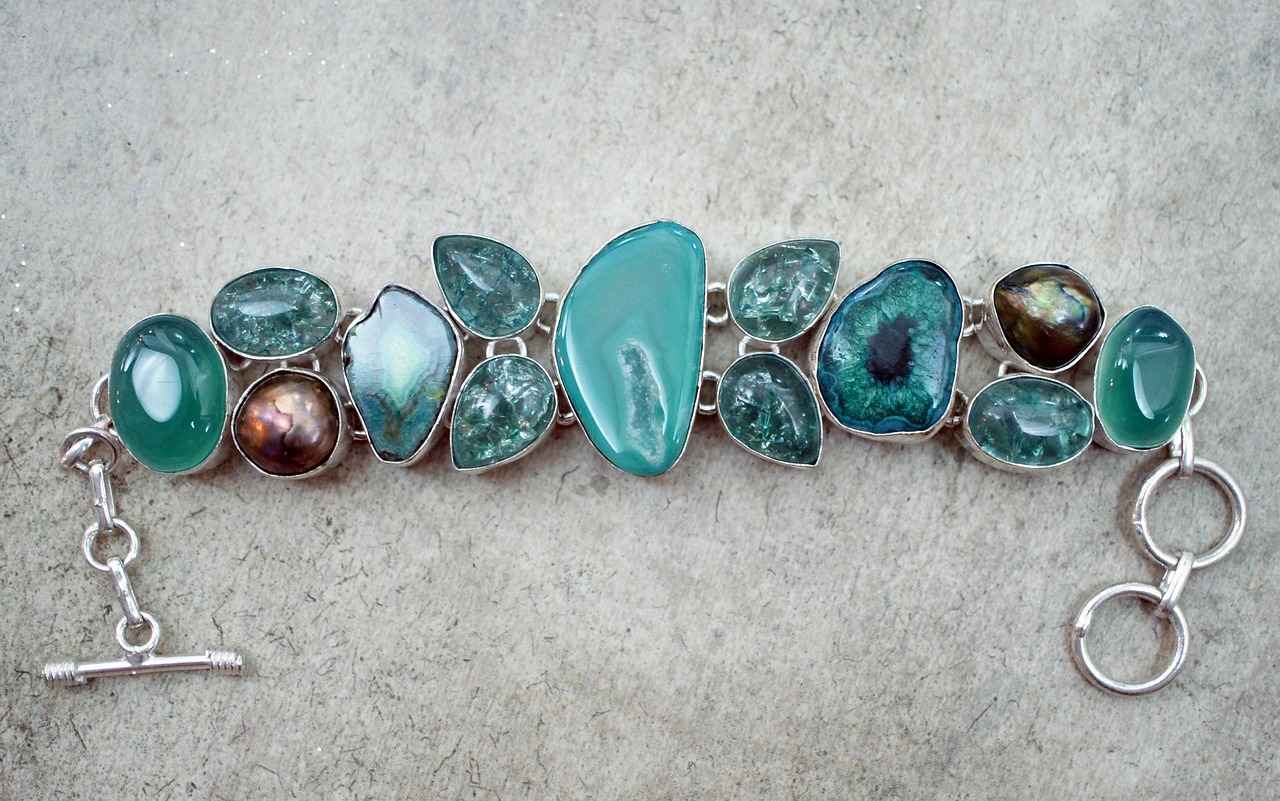
What Trends Are Shaping the Future of Symbolic Jewelry?
As we navigate through an era of heightened consciousness regarding our choices, the world of jewelry is undergoing a significant transformation. Emerging trends in symbolic jewelry are increasingly focused on sustainability and personalization. This shift not only reflects a growing awareness of ethical consumption but also caters to the desire for meaningful and individualized adornments.
Consumers today are more informed than ever about the impact of their purchases. Jewelry made from sustainable materials, such as recycled metals and ethically sourced gemstones, is gaining traction. This trend is driven by a collective desire to minimize environmental harm and promote fair labor practices. For instance, brands are now offering pieces crafted from lab-grown diamonds, which not only reduce carbon footprints but also eliminate concerns related to conflict diamonds.
Personalized jewelry allows individuals to express their unique identities and stories. From engraved names to custom designs, these pieces become more than just adornments; they transform into treasured keepsakes. The ability to tailor jewelry to reflect personal milestones, such as anniversaries or births, adds emotional depth, making the piece truly one-of-a-kind. This trend aligns with the growing consumer preference for items that resonate on a personal level.
Ethical consumption is a major driver of change in the jewelry industry. Shoppers are increasingly seeking out brands that prioritize transparency and sustainability in their supply chains. This shift encourages jewelers to adopt practices that are not only environmentally friendly but also socially responsible. As a result, consumers can feel confident that their purchases support ethical practices, fostering a deeper connection to their jewelry.
The integration of technology in jewelry design is another trend shaping the future. 3D printing and computer-aided design (CAD) allow for intricate, customizable designs that were previously unattainable. This technological advancement empowers consumers to collaborate with designers, resulting in personalized pieces that reflect their individual tastes and preferences. Moreover, augmented reality (AR) applications enable customers to virtually try on pieces before making a purchase, enhancing the shopping experience.
Social media platforms play a pivotal role in shaping contemporary jewelry trends. Influencers and celebrities often showcase unique and personalized pieces, sparking interest among their followers. This visibility not only promotes specific styles but also encourages consumers to seek out similar items that reflect their personal aesthetics. As a result, social media has become a powerful tool for discovering and promoting new jewelry trends, driving demand for sustainable and personalized options.
Cultural influences are increasingly evident in the jewelry market. As globalization continues to connect diverse communities, traditional symbols and designs are being reinterpreted in modern contexts. This blending of cultures allows for a rich tapestry of styles that resonate with consumers from various backgrounds. Jewelry pieces that incorporate cultural symbols can serve as powerful reminders of heritage and identity, making them particularly appealing to those seeking to celebrate their roots.
In conclusion, the future of symbolic jewelry is being shaped by a combination of sustainability, personalization, and cultural influences. As consumers become more discerning in their choices, the demand for ethically produced and meaningful pieces will continue to rise, heralding a new era in the world of adornments.
Frequently Asked Questions
- What is the significance of jewelry in different cultures?
Jewelry often symbolizes love, status, or protection, varying across cultures. For instance, wedding rings signify commitment, while talismans may represent spiritual protection, reflecting the values and beliefs unique to each society.
- How does personal style affect jewelry choices?
Your personal style is a major influencer when selecting jewelry. People tend to choose pieces that resonate with their identity, showcasing their tastes and lifestyle, making each adornment a unique expression of who they are.
- What are some common symbols found in jewelry?
Jewelry often features symbols like hearts, infinity signs, and crosses. Each carries specific meanings, such as love, eternity, and spirituality, making them popular choices for personal expression and connection.
- Why do people wear religious jewelry?
Religious jewelry serves as a reminder of one’s faith and beliefs. Items like crosses or prayer beads provide spiritual comfort and signify devotion, making them meaningful pieces in many people’s lives.
- What role do engagement rings play in symbolism?
Engagement rings symbolize love and commitment. The choice of metal and stone can reflect personal values, such as sustainability or family heritage, adding layers of meaning to this significant piece of jewelry.
